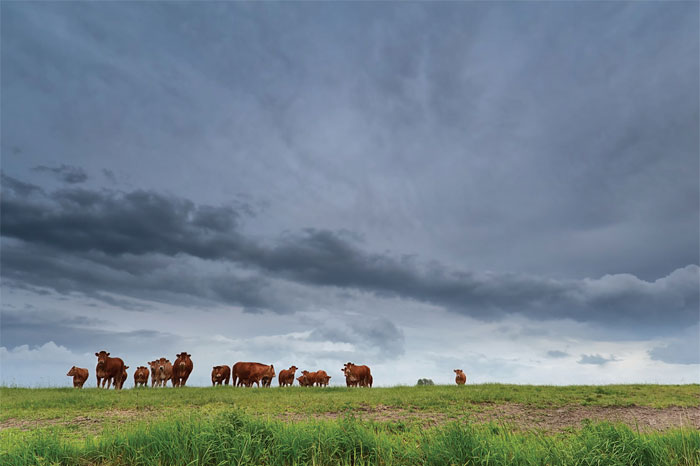Be ready with these before, during, and after storm-prep reminders
FOR GROWERS, RANCHERS, AND PET AND LIVESTOCK OWNERS, hurricane preparedness begins long before the storm makes landfall and continues even after the final tree stops swaying. From maintaining grove tree size and keeping tools on-hand for repairing and resetting, to having pets micro-chipped and the database updated with their information, two experts from the University of Florida Institute of Food and Agricultural Sciences offer their suggestions as to how to prepare for this year’s hurricane season.
In preparation before the storm, Jonathan Crane, a professor and tropical fruit specialist, says, “The number one defense would be grove tree size control well prior to a hurricane. In other words, trees should be pruned annually to limit their height so as to reduce their chance of falling over (wind throw), uprooting, and/or breaking apart. We documented many fruit crops (such as avocado, mango, and mamey sapote) that withstood strong winds (i.e., stayed in place) if trees were about 16’ to 20’ tall at most. By limiting tree height growers can reduce or avoid the need to reset toppled trees or disposing of uprooted trees, which is time consuming, costly, and dangerous.”
Crane also suggests, “Before the storm, make sure you have the equipment that may be needed in resetting and repairing damaged trees on-hand (i.e., chain saws, back-hoes, and fuel). Making a plan prioritizes which groves or blocks of trees to save or repair first, second, etc.”
Once the storm has finally dissipated, or at least moved out of the area, he suggests taking these three steps:
1) Carefully assess the damage to groves or crops
2) Make adjustments to plans for recovery/repair to groves
3) Begin to implement grove recovery plan (i.e., infrastructure like irrigation systems and tree resetting, pruning, etc.)
As Crane surmises, “Make a plan for repair and recovery, gather and safely store equipment and fuel ahead of time, and train personnel in tool safety and procedures.”
John Haven, director at the UF College of Veterinary Medicine, offers some suggestions on how to protect pets and farm animals.
He observes, “The number one defense is to plan for your family and to include your pets. Make sure to have a copy of all important documents (photos of pets, and property for claiming lost animals, and insurance claims for destroyed property), and your pets are micro-chipped with the database updated.”
Before the storm hits, “plan how to record ownership of the pets and/or have documentation. If you’re planning to shelter in place, have a generator on hand, and water for the family and animals. Remember horses can drink 20 gallons a day. Power may be out for hours or even days, so plan accordingly for food, water, batteries, fuel, etc. Also, trim trees around the house to reduce damage to the home and cars. If you’re going to evacuate, be sure to have your pets’ vaccinations records, and have enough food/meds for a week or more. If authorities suggest evacuation, do it. Don’t make rescuers risk their lives, when it could have been avoided.”
When it comes to how to prepare during the storm, John suggests, “By the time winds reach 35 mph sustained, everyone needs to be in shelter. For livestock, it may be to just turn them out in a paddock with no high tension power lines. Typically, horses will do better in a paddock than in a barn stall unless the barn is of substantial construction.”
After the storm, John believes it is important to let friends and family know your status. Don’t go cruising to look at damage. Also, remember other animals have taken shelter. Snakes, for instance, may be in sheds or barns, so be careful, and check fences to ensure animals are still safely contained.
Finally, John advises, “Pet owners should know if their veterinarian will be open after a hurricane, have a first aid kit for themselves and their pets, determine the location and rules of the local pet-friendly shelter, and most importantly, develop a plan.”
CREDIT
article by GRACE BOGGESS

